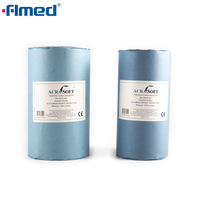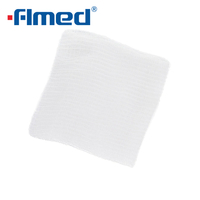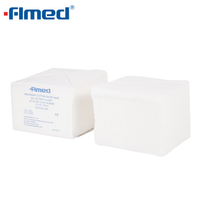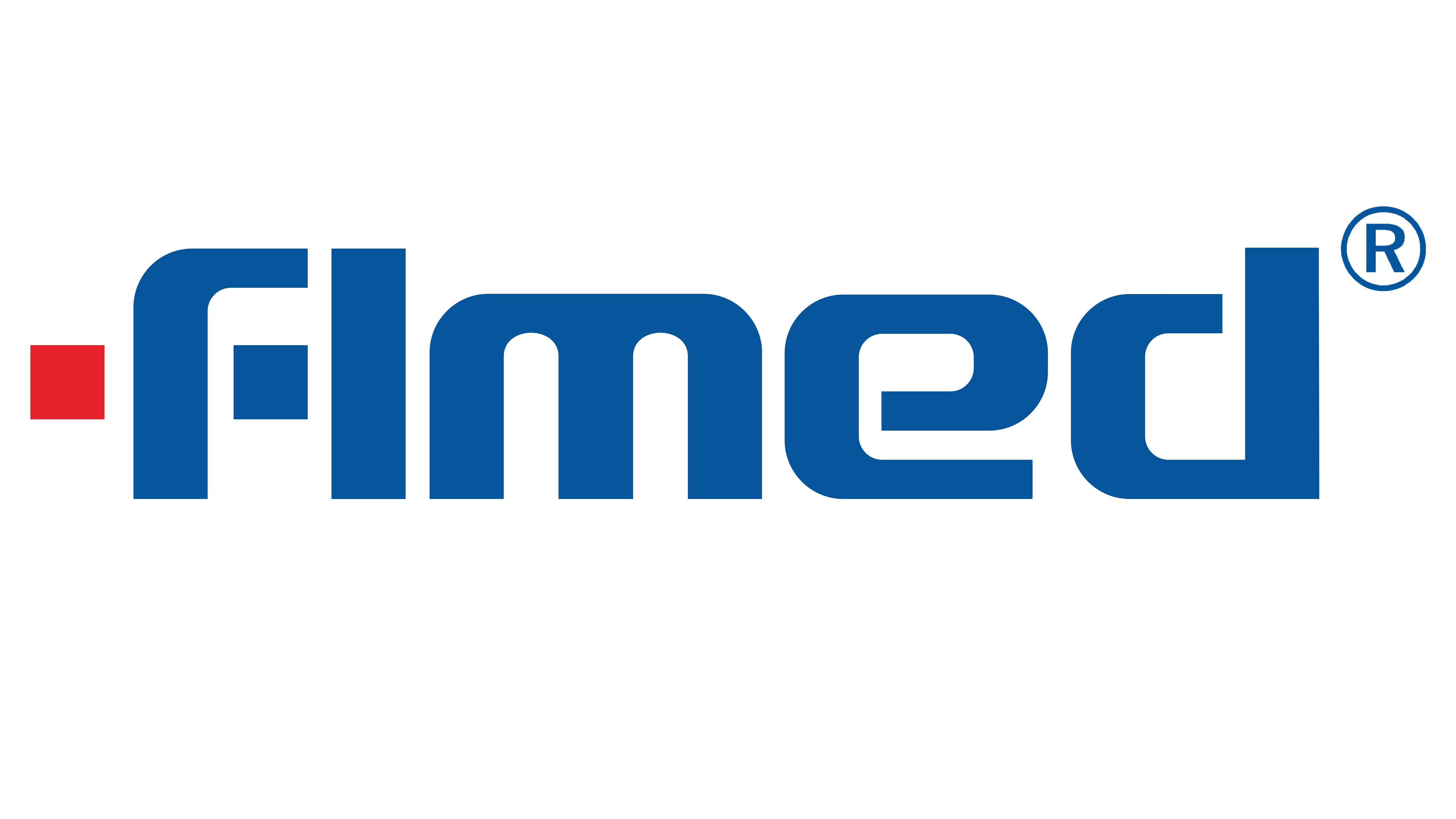
When selecting the right wound care supplies, many buyers come across two closely related yet distinct formats: gauze pads and gauze sponges. Although both fall under the broader category of medical gauze, their construction, thickness, and absorption capacity differ significantly, influencing how they should be used in clinics, first-aid kits, and home care. Understanding the differences helps distributors, healthcare professionals, and patients make cost-effective, safe, and practical choices. At Forlong Medical, we specialize in offering high-quality medical gauze products in multiple formats to meet different care needs.
Definitions That Matter in Purchasing
What is a gauze pad?
A gauze pad is typically a flat, single- or double-layer piece of medical gauze. It is lightweight, designed for covering wounds, and is often used as a secondary dressing to protect the site from dirt, dust, or external contact. Because it is thinner and less bulky, gauze pads are easy to apply, replace, and carry in compact first-aid kits. They are not intended to hold large volumes of fluid but work well for light drainage and protective coverage. Many home-care users prefer pads for everyday cuts, abrasions, or small surgical incisions, since they allow the skin to breathe while keeping the site clean.
What is a gauze sponge?
Unlike gauze pads, gauze sponges are multi-ply and folded, giving them higher thickness and absorption capacity. Sponges are commonly used in hospitals, surgical centers, and wound clinics where heavy drainage is expected. They can absorb more exudate, making them suitable for procedural cleanup, wiping during surgery, or treating wounds with significant fluid output. Their layered structure adds durability, making them an essential item in high-demand clinical environments. Because of this construction, gauze sponges are also frequently used by emergency responders, who require fast absorption and a dressing that holds up under pressure.
Ply, Thickness, and Absorption—Reading the Specs
Common ply ranges and their use
Ply is one of the most important specifications in medical gauze selection. Gauze pads are often available in 2- to 4-ply structures, providing lighter coverage and flexibility. In contrast, gauze sponges generally range from 4-ply to 12-ply, where each additional layer adds bulk and liquid retention ability. A 4-ply sponge may be sufficient for moderate exudate, while higher plies are ideal for post-operative care and procedures requiring quick fluid absorption. Clinics often stock multiple ply ranges so they can adapt dressings to patient needs without delay.
Size map and replacement frequency
Medical gauze is most frequently offered in sizes such as 2x2 inches, 3x3 inches, and 4x4 inches. Smaller sizes are useful for minor cuts and compact coverage, while larger ones fit surgical sites and areas with broader wounds. Regardless of format, frequent changing is key—gauze should be replaced once saturated to maintain wound hygiene and reduce infection risks. Pads may require more frequent replacement since they hold less, whereas sponges can last longer between changes when used correctly. Good practice also recommends recording dressing changes, especially in hospital environments, to ensure no step in wound management is overlooked.
Best-Fit Use Cases
Sponges for heavy exudate and procedural cleanup
In situations where wounds produce a high level of exudate, or during surgical procedures where blood and fluids need to be managed, gauze sponges are the preferred choice. Their multi-ply build enables them to retain more liquid without breaking apart, ensuring the dressing remains effective longer. Sponges also provide cushioning, protecting the wound while maintaining a clean environment. Surgeons and nurses often favor sponges during operations because they are versatile—able to both absorb and wipe effectively.
Pads for light drainage and secondary cover
For lighter wounds, scrapes, or post-healing phases where minimal drainage is expected, gauze pads serve as a practical and economical solution. They function effectively as secondary dressings when placed over ointments, adhesive strips, or hydrocolloid layers. Pads are also more comfortable for patients when only a thin protective barrier is required, reducing unnecessary bulk. In outpatient clinics, gauze pads are often prescribed for patients who change their own dressings at home, since they are simpler to handle and less intimidating than thicker sponges.
![Medical Gauze Medical Gauze]()
Material Choices: Woven vs Non-Woven in Each Format
Lint-sensitive settings and soft-touch options
Both gauze pads and sponges can be manufactured as woven or non-woven. Woven gauze is made from traditional cotton fibers and provides strong structural integrity, though it may shed lint. Non-woven gauze, by contrast, is softer, smoother, and generates less lint, making it ideal for sensitive wounds, burns, or surgical environments where fiber residue must be minimized. Hospitals often prefer non-woven variants for their softness and patient comfort. For example, burn units typically select non-woven gauze to avoid fibers sticking to delicate tissue.
When non-adherent or impregnated variants help
Beyond basic woven and non-woven types, both pads and sponges are available in advanced forms such as non-adherent dressings or impregnated gauze. Non-adherent versions prevent sticking to the wound bed, which is essential for fragile skin or frequent dressing changes. Impregnated gauze, treated with substances like petroleum or antiseptics, supports faster healing and minimizes trauma during dressing changes. These specialty variants expand the utility of both gauze pads and gauze sponges across different care settings. Forlong Medical manufactures a wide range of such advanced gauze formats, ensuring customers have options that fit diverse clinical scenarios.
Switching Formats as Wounds Heal
From high capacity to lighter coverage to reduce waste
One of the most overlooked aspects of wound care is knowing when to switch formats. At the early stage of a wound with heavy exudate, sponges are often necessary to manage drainage efficiently. As healing progresses and fluid output decreases, transitioning to gauze pads makes sense to avoid unnecessary waste and reduce costs. This transition also improves patient comfort, as thinner pads are less bulky and easier to secure under tape or bandages.
Healthcare providers often educate patients on this transition, emphasizing that wound dressings should change with the wound’s condition. For instance, a post-operative patient may start with thick sponges to handle drainage in the first few days, then move to pads as healing continues. This staged approach not only conserves resources but also makes dressing changes easier for patients at home.
Practical Buying Considerations
When stocking medical gauze for clinical use or retail distribution, it is wise to think beyond just pads versus sponges. Buyers should evaluate packaging formats—sterile single packs, bulk boxes, or individually wrapped sets—depending on their target customers. Hospitals may prefer sterile sponges in bulk to support surgical teams, while first-aid suppliers often select compact sterile pads that fit into small kits. Durability, shelf life, and ease of storage also play a role, especially in large-scale procurement. Working with a manufacturer like Forlong Medical ensures consistency in quality, reliable delivery, and compliance with international standards, all of which are critical for healthcare buyers.
Conclusion
Both gauze pads and gauze sponges are integral forms of medical gauze, each designed for different purposes. The general rule is simple: use sponges when high absorption is needed and pads when lighter coverage suffices. Selecting the right format directly impacts patient comfort, dressing frequency, and overall treatment costs. Forlong Medical provides a complete range of gauze pads, gauze sponges, and other surgical gauze products manufactured to international standards. If you are searching for reliable and high-quality wound care supplies, we welcome you to contact us for more information and product support.

 English
English













